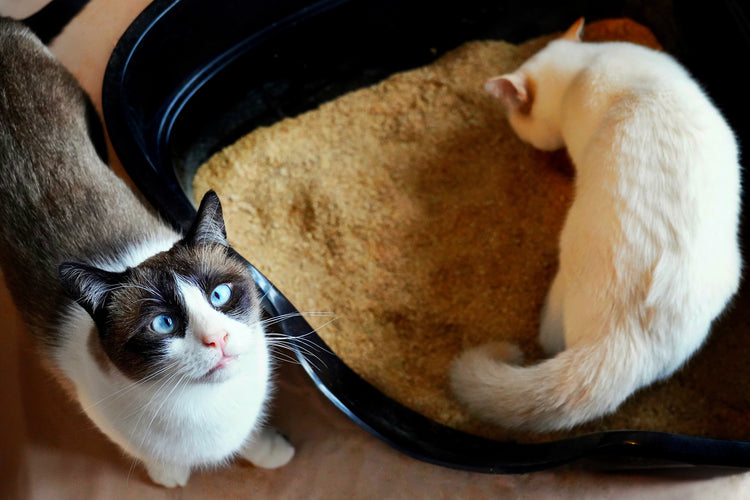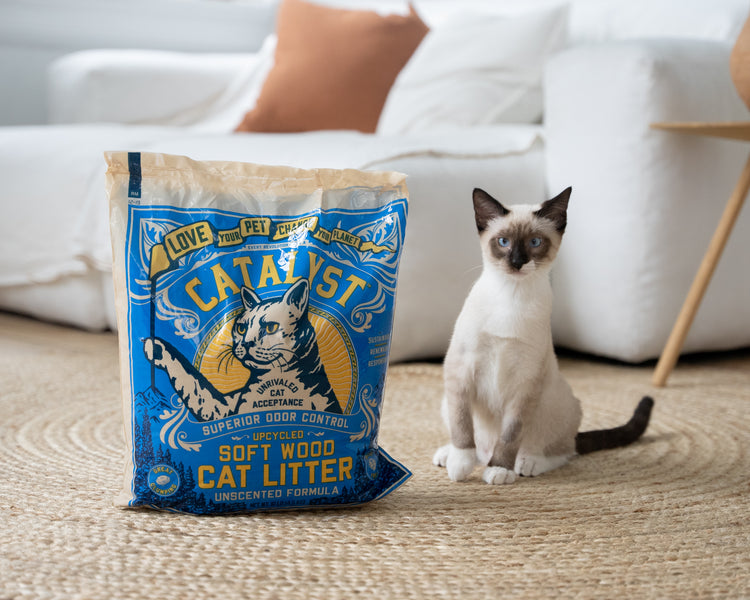
How To Transition
Your Cat To Catalyst
Here’s how we (and our customers) recommend making the litter transition as smooth as possible. Looking for how to switch to wood pellets litter instead? Click here
Step one
To start, open the Catalyst bag and set it next to your cat’s litter box to allow them to smell it. A strange new smell is the biggest reason cats reject a litter, so give your cat ideally 2-3 days to get comfortable with the smell.
step two
we have two options to try:
we have two options to try:
Litterbox Best Practices
The more litterboxes the better for cats, but ideally having one litterbox per cat plus an extra is key.
Choosing a large litterbox can help cats use their natural sense to dig and cover in the litterbox. This is especially important for larger cats, as they require more space.
Consider giving your cat treats when you see your cat using the new litter - positive reinforcement always helps!
Try not to introduce any other changes around the litterbox while transitioning the litter if possible. That includes using a new litterbox, loud noises (such as construction work), new room, new people in the house etc. If possible, keep everything the same except for the litter. Cats are creatures of habit!
Cats have shown a preference for litterboxes set against a wall - it gives them protection at a time when they feel vulnerable. However, make sure the litterbox is located in a quiet area of the home (ie. not beside a noisy appliance or furnace) as this can be scary for cats.
WOOD PELLETS LITTER TRANSITION INSTRUCTIONS
- Start with Catalyst pelletized litter as the first layer in the box. Top with an equal layer of your existing litter.
- With each box change (~ every 2 weeks) gradually increase the amount of pelletized litter and add less of the old litter.
- This transition should take 3-4 litter box changes (~1.5-2 months) for the process to be complete.
- Alternatively, you can incorporate Catalyst pelletized litter into your routine gradually with a mix-in method.
- Each time you scoop your old litter, mix in a handful of pellets. Continue this process until the pellets have completely replaced all of the old litter.
- For optimal results, clean out the box entirely halfway through (when you are at a 1:1 ratio), refill box with the 1:1 ratio and continue to scoop/replace as needed.
My cat isn’t taking to the litter immediately! Help!
1
Try restarting the litter transition process, but this time with just 10% Catalyst and 90% your previous litter.
2
Use the method you didn’t try last time - if you layered it last time, try mixing it, and if you mixed it last time, try layering it.
3
As you scoop out litter, add just Catalyst each time until the transition is complete.
4
Calming sprays such as Feliway Calming Sprays can potentially help as well to calm your kitty during the transition
5
If your kitty is still not taking to the litter, desperate times call for desperate measures! If you have a bit of leftover waste from the old litter box, you can place it with the new litter.
6
This gives your feline friend a recognizable scent marker, signaling the appropriate place for them to go to the bathroom.
Let’s Be Friends
Get tips, spotlights, and upcoming offers and deals!

















